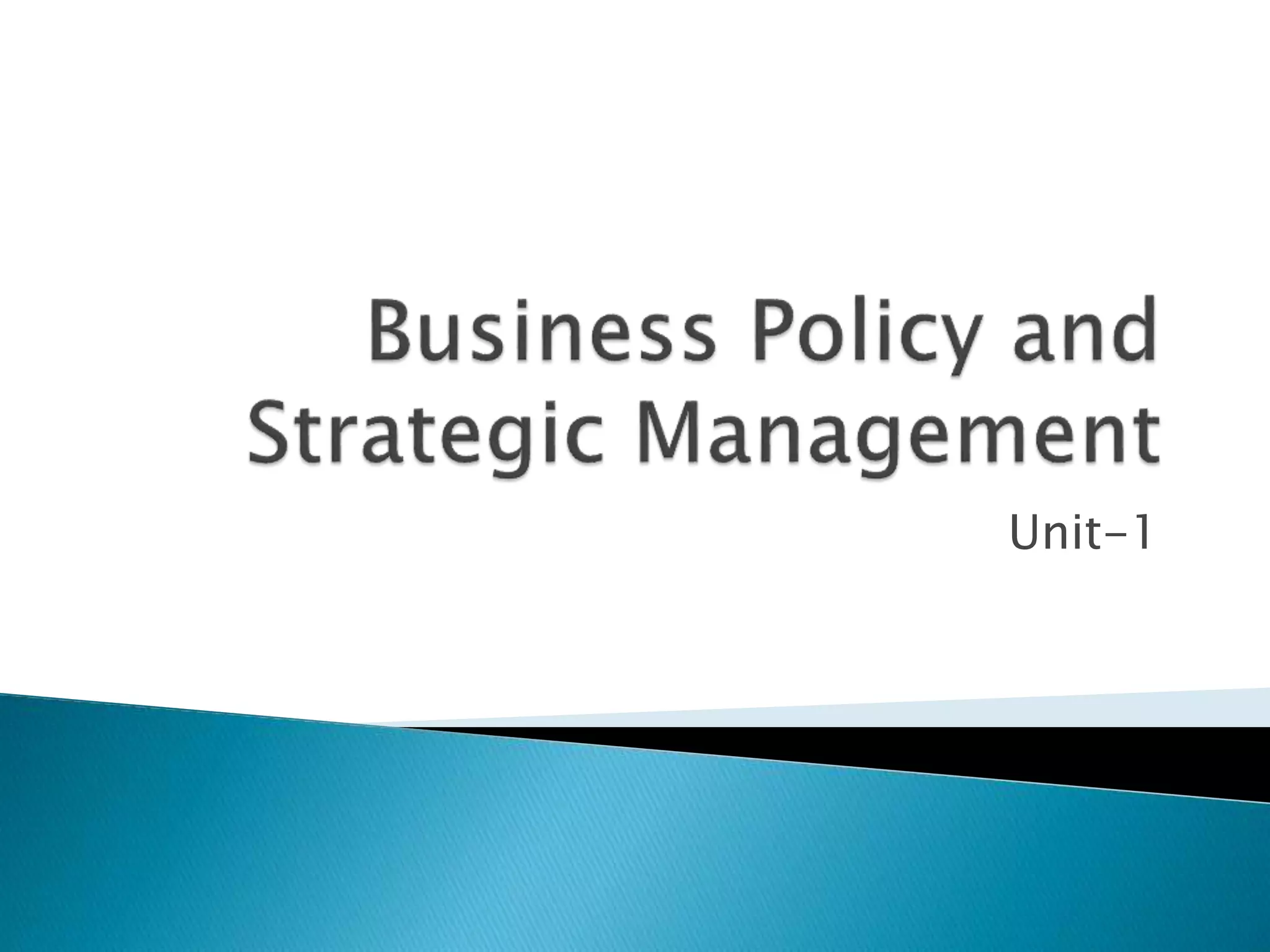The document discusses various aspects of business policy including:
1. Business policies are guidelines developed by organizations to govern their actions and define decision-making boundaries. They help achieve organizational goals.
2. Business policies cover functional areas like production, marketing, finance, and personnel. They define roles and responsibilities of senior management.
3. Effective business policies are specific, clear, reliable, appropriate, simple, inclusive and flexible to guide organizational activities. They provide long-term direction for organizations.

























































